The Relative Strength Index (RSI) is used to help detect whether an asset's price has been overbought through sustained upward movement or oversold downward. When the price changes to one of these extremes, we would expect a reversal. The RSI gives instruction to traders to buy when the coin is oversold and sell when it is overbought as part of their trading tactic.
CALCULATION OF THE RSI
Today's trading platforms are able to do the RSI calculation automatically, so you don't need to do it manually. However, it is useful for a trader to understand how the RSI is determined from the actual formula:
<RSI = 100 - [100 / (1 + RS)] - Where: RS (Relative Strength) = average gain / average loss>.
The RSI fluctuates between overbought market conditions and oversold market conditions. The RSI indicates thrust by providing a relative assessment of the strength of an asset's latest price performance. The level of the RSI is a degree of the asset's latest trading strength. The slope of the RSI is directly proportional to the speed of a change, while the space traveled is proportional to the magnitude of the movement.
IS THE RSI TRUSTED ON CRYPTOCURRENCY TRADING?
My answer is yes, the indicator is used to aid us in identifying when an assets price is too far from its real value and therefore makes it possible for a trader to take advantage before the market fixes itself. With the aid of RSI, investors are most likely to get a nice trading entry, and that makes it an invaluable instrument for trading the unstable cryptocurrency markets.
HOW TO SET UP AND CONFIGURE THE RSI
Lets take a look at how we can configure the RSI indicator on our chart.
- The first step as usual is to login in to the website, for this illustration lets make use of www.tradiny.com/index.html
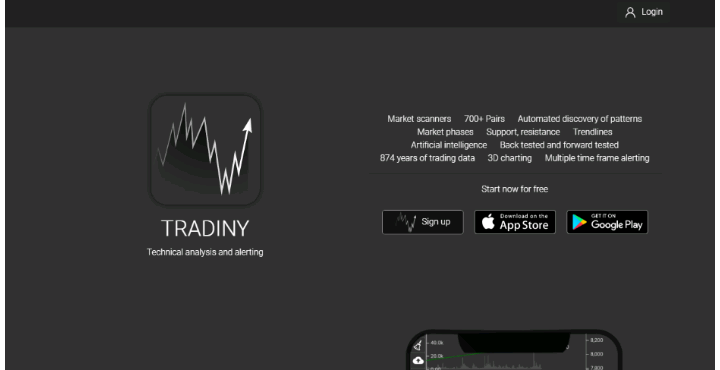
- Login or sign up if you do not have an account
- Click on chart at the top left of your screen
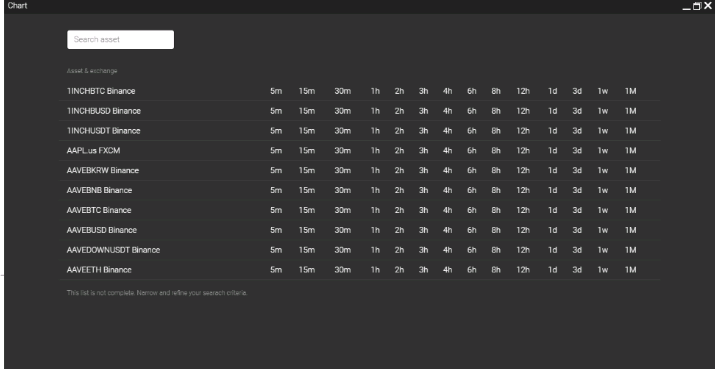
- The chart will automatically open
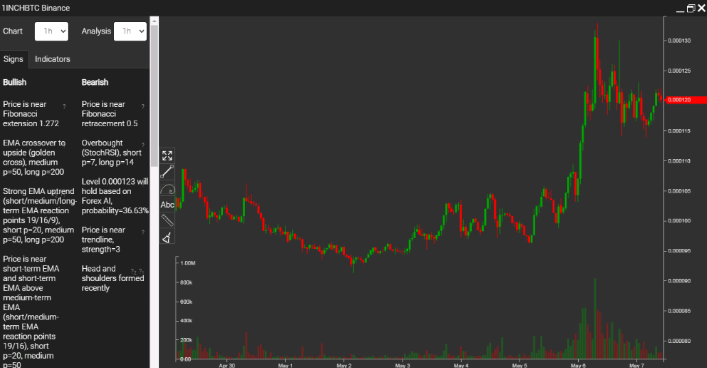
- At the top left of the chart you will see an heading named signs, select it to see the list of signs
- You can search the RSI, click on it to display the graph
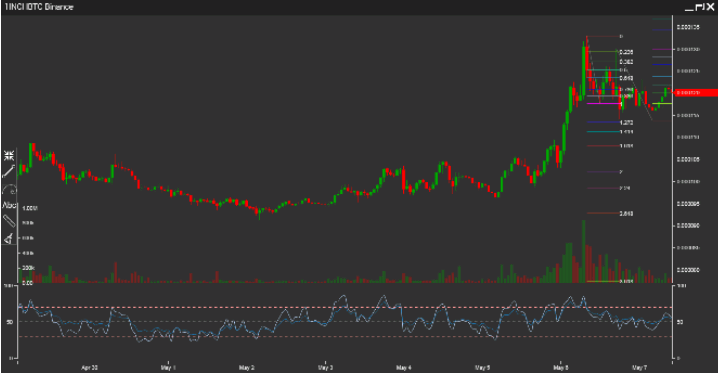
HOW TO ENTER THE RSI ON IQ OPTION
Example of how to insert the RSI indicator on the IQ Option chart
Once logged into your online trading account you will have to access the "Indicators" section and choose the RSI indicator among the many available. Once the RSI index has been selected in the indicators menu, just click on the Apply command to use it with the default (standard) settings. The indicator graph will appear at the bottom of the asset trend screen.
If you do not want to use the RSI with the standard settings , you can choose the command: Set and Apply . Setting the parameters of the indicator allows you to adjust the interval of periods and the limit levels of overbought and over-sold. This will result in a different accuracy (or sensitivity) of the signals received by the analysis.
Please note: the wider the selected range, the smaller the number of signals received, but they will have a greater reliability. Conversely, for shorter time periods or tighter thresholds, you will get many more crossover signals but they will have less reliability and the risk of receiving false entry and exit signals will increase.
WHY IS 14 BY DEFAULT
The default RSI setting uses 14 periods, which means that the indicator takes into account the last 14 candles. It compares the average gain and average loss, analyzes how many of the last 14 candles have been bullish and how many bearish, and also evaluates the size of the candle. For example, if all 14 past candles were clearly bullish, the RSI would show a value of 100. If the last 14 candles were all clearly bearish, the RSI would show a value of 0. You often don't even need the RSI if you take the time to look closely at the last 14 candles. However, the indicator is a good tool for reducing analysis times and obtaining objective confirmation.
RSI TRADING SIGNALS
OVERSOLD: An RSI value between 0 and 30 is considered oversold. Some traders assume that an oversold currency pair indicates that the market's downtrend reverses, hence a buying opportunity (i.e. a bullish signal).
OVERBOUGHT: On the other hand, an RSI value that falls in the 70-100 region of the scale is considered overbought. This signal suggests that the resistance level for the currency pair is near or has been reached and the rate is likely to drop. Some traders will see this as an opportunity for sell i.e. a bearish signal.
WHAT ARE THE FALSE SIGNALS IN ONLINE TRADING
The principles of Technical Analysis serve to provide and understand as much information as possible on the past movement of the price in order to be able to predict its future trend.
Studying a chart looking for various price patterns may seem like a rather complex activity, but really the difficult part is distinguishing the true entry signals from the false ones that lead us to enter the market when the probabilities are not really on our side even if they seem to be.
The false signals in trading occur mainly in markets with high volatility or in the vicinity of important macroeconomic news. These particular moments of the market can momentarily break some supports or resistances or even reverse the trend of a market for a short period, creating a real moment of panic among the active subjects of the market.
I remind you when you start your trading day you should always check the volatility statistics and economic calendar to see if there is any upcoming news.
HOW TO SPOT FALSE SIGNALS
There are several ways to identify potential false signals in trading but the main tools used by professional traders are: Volume analysis and the use of at least two indicators of the same parameter.
Analyzing the volume allows us to understand what are the trading volumes carried out in a given trading session; when we are faced with strong trading volumes we usually also have strong price movements , when instead the movements are not supported by strong capital, price movements tend to decrease.
It is therefore important to always try to identify if there are divergences
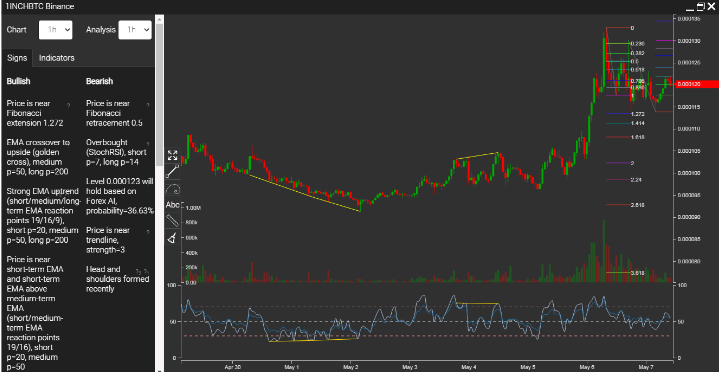
Divergence
CHART REVIEW
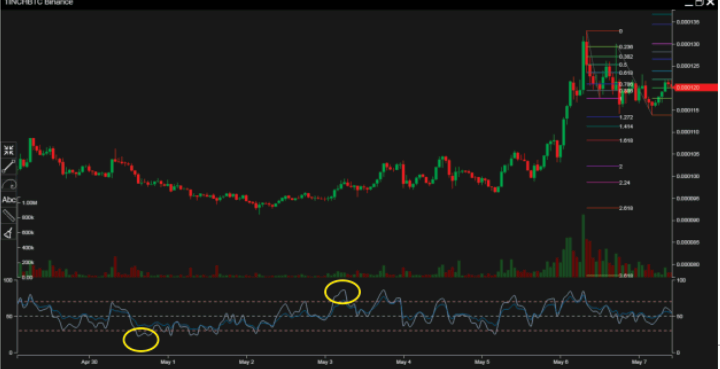
Looking at the chart above, the top circled part of the chart indicates that it is overbought, so you sell and the lower circles part indicates oversold, so it is advisable to sell.
thanks for sharing this wonderful information
Yes, thanks for insight. But it depends on which one you are okay with, you can set your RSI to be 80 and 20 for overbought and oversold.
Thanks for stopping by to read through. You can be checking as i will be posting more on finances.
It is a great write up, I tried to cover it before but I did it in a very simplistic way.
Oh, really, that's cool 🙂